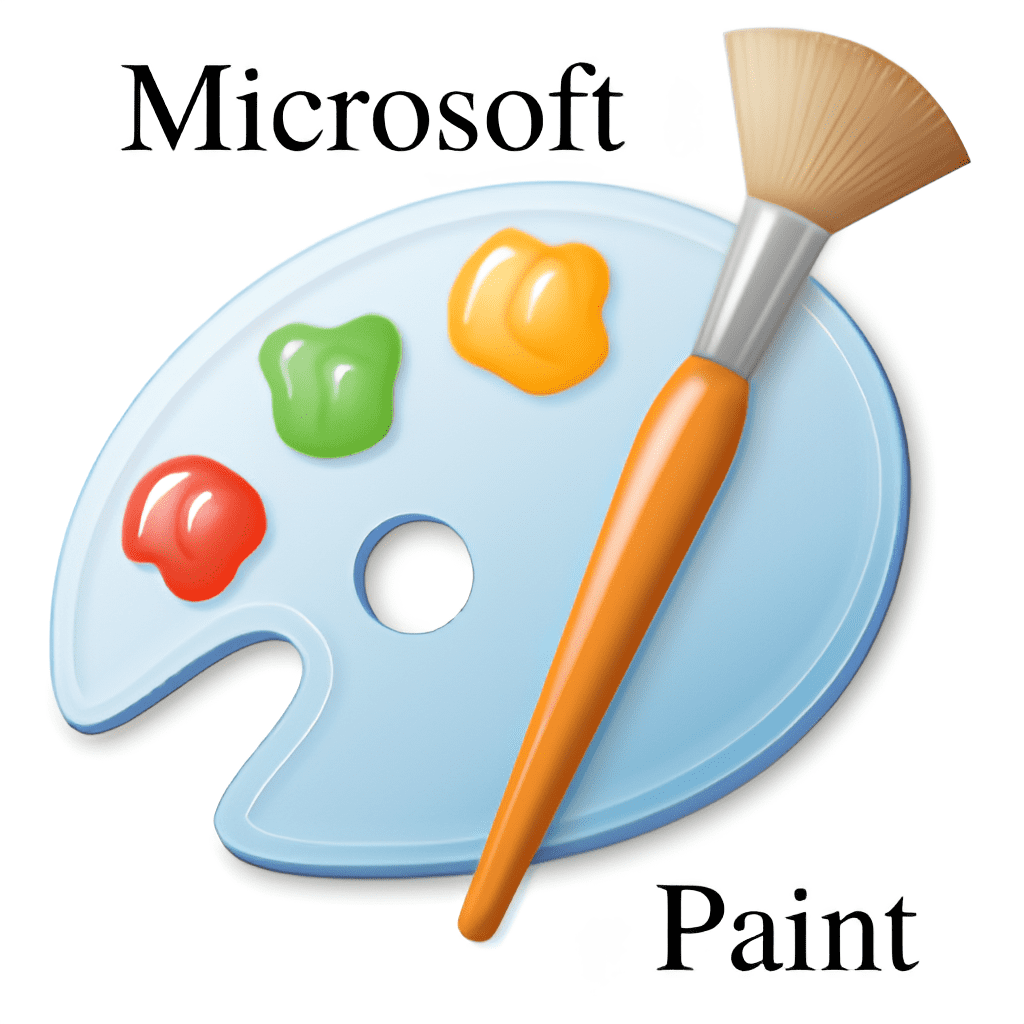
Discover why Microsoft Paint remains one of the most beloved and enduring tools in digital creativity. From simple sketches to quick edits, explore its features, benefits, and a complete step-by-step guide that will turn your screen into a creative canvas.
Microsoft Paint may be simple, but its impact and relevance are undeniable. For many users around the world, it represents the first step into digital art and design. Its accessibility, versatility, and low barrier to entry make it both an essential tool for beginners and a quick, dependable option for professionals needing light-weight edits.
Starting at age 44, your energy, metabolism, and overall well-being may be silently declining. Don’t wait for symptoms.
🖥️ A Classic Built Into Every Windows Experience
Since its debut in 1985, Microsoft Paint has been included with every version of Windows, serving as a gateway to creativity for millions. Whether sketching, coloring, or editing, Paint offers a minimalistic workspace where imagination takes center stage.
Learning to use Paint provides a solid foundation in digital design, introducing essential concepts such as layers (simulated), color selection, shapes, and composition. These basics form the building blocks for mastering more advanced tools later on.
Microsoft Paint is a built-in application in the Windows operating system, designed as a fundamental tool for digital drawing and image editing. Despite its simplicity, it offers a surprising range of functions that meet the needs of both beginners and experienced users.
This guide explores everything about Microsoft Paint — from its core features and benefits to a complete, step-by-step tutorial for using it effectively.
──────────────────────────────
🧰 Key Features of Microsoft Paint
Paint’s longevity comes from its clarity and practicality. It focuses on what matters most: giving users immediate control over their creativity. Let’s look at its main features.
──────────────────────────────
🖼️ User-Friendly Interface
The interface of Microsoft Paint is designed to be intuitive and distraction-free. All tools and options are easily accessible from a single window. This simple layout allows creators to focus on their art rather than navigating complex menus.
──────────────────────────────
✏️ Basic Drawing Tools
Pencil and Brush: Draw freely on the canvas. The brush offers multiple sizes and textures to create different effects, while the pencil allows pixel-perfect precision.
Eraser: Removes unwanted parts of an image or drawing, offering direct control over fine details.
──────────────────────────────
🔶 Shape Tools
Paint includes a variety of pre-defined shapes — rectangles, circles, lines, arrows, and more. These can be inserted, resized, and adjusted easily, making Paint a great option for diagrams, charts, and structured illustrations.
──────────────────────────────
🎨 Color Palette
The color palette in Paint is straightforward yet flexible. It provides preset colors and lets users create custom shades. With one click, you can switch between primary and secondary colors.
──────────────────────────────
🔤 Text Tool
Add words directly to your designs using the Text tool, which allows control over font, size, and style. Perfect for adding captions, labels, or annotations to your artwork.
──────────────────────────────
🧾 File Compatibility
Paint supports multiple image formats — BMP, JPEG, PNG, GIF, and TIFF. This broad compatibility ensures that your creations can be used across various platforms, shared online, or printed without hassle.
──────────────────────────────
🧩 Paint 3D
Introduced in Windows 10, Paint 3D expanded the classic tool into a new dimension. It allows users to design and manipulate 3D objects, blend them with 2D art, and explore a more dynamic creative experience.
──────────────────────────────
🌟 Benefits of Using Microsoft Paint
Microsoft Paint’s simplicity hides its power. Its design philosophy — creativity without complexity — provides a number of advantages.
──────────────────────────────
⚡ Accessibility
Paint is included on every Windows device, meaning it’s ready to use instantly. No downloads, subscriptions, or installations required. Its clean interface ensures anyone can jump right in — from children to professionals.
──────────────────────────────
🔁 Versatility
From basic doodles to quick image edits, Paint handles an impressive range of tasks. Users can:
Create simple illustrations
Edit and crop photos
Annotate screenshots
Design quick diagrams or infographics
Prepare images for presentations or blogs
──────────────────────────────
🎓 Learning Platform
For beginners, Paint is an entryway into the world of digital design. It teaches foundational concepts like color harmony, spatial balance, and proportion — principles that remain essential even in professional software.
──────────────────────────────
⚙️ Efficiency
Paint’s minimalism is its strength. You can perform rapid adjustments — cropping, rotating, resizing — without the heavy processing or clutter of complex programs. It’s the go-to tool for speed and convenience.
──────────────────────────────
👶 Ease of Use
No training required. Paint’s intuitive design makes it approachable for any age or background. The interface feels familiar even to those who have never used graphic software before.
──────────────────────────────
💰 No Cost
Since Paint comes pre-installed with Windows, it’s entirely free. It’s an economical and efficient way to learn image editing and digital drawing without any financial barrier.
──────────────────────────────
🧭 How to Use Microsoft Paint: Step-by-Step Guide
Follow this practical guide to get the most out of Paint — whether you’re sketching a new idea or editing a photo.
──────────────────────────────
🖱️ Opening Microsoft Paint
Type “Paint” in the Windows search bar.
Click on the Paint application from the list.
A blank canvas appears, ready for your creativity.
──────────────────────────────
🧭 Exploring the Interface
Canvas: The white space where you draw, paint, or edit images.
Toolbox: Found on the left, containing Pencil, Brush, Fill, Eraser, and Shape tools.
Color Palette: Located below, allowing quick access to color selection.
Menu Bar: At the top, for opening, saving, printing, and adjusting settings.
──────────────────────────────
🖌️ Creating and Editing an Image
✏️ Drawing
Choose the Pencil or Brush tool.
Select a color.
Click and drag on the canvas to draw freely.
──────────────────────────────
🔲 Adding Shapes
Select the Shapes tool.
Pick a desired shape — rectangle, circle, arrow, etc.
Click and drag to draw. You can resize or reposition before finalizing.
──────────────────────────────
🔤 Adding Text
Click the Text tool.
Click on the canvas where you want the text to appear.
Type your message and adjust font, size, and style in the menu bar.
──────────────────────────────
🎨 Filling Areas with Color
Select the Fill (bucket) tool, pick a color, and click inside an enclosed area to color it instantly.
──────────────────────────────
✂️ Editing Your Image
🧩 Cropping
Use the Select tool to outline the area you wish to keep.
Click Crop in the menu bar to trim the image.
──────────────────────────────
📏 Resizing
Click Resize in the menu.
Choose percentage or pixel dimensions.
Check “Maintain aspect ratio” to prevent distortion.
──────────────────────────────
🔁 Rotating
Use Rotate to turn your image 90° clockwise, counterclockwise, or to flip vertically/horizontally.
──────────────────────────────
💾 Saving Your Work
Go to File → Save As.
Choose a file format (e.g., JPEG, PNG, BMP).
Name your file and select a folder.
──────────────────────────────
📤 Exporting and Sharing
Once saved, your image can be printed, attached to an email, or uploaded to social media. Paint ensures quick output and easy sharing across devices and platforms.
──────────────────────────────
🖼️ Step-by-Step: Converting a Screenshot Using Microsoft Paint
Need to turn a screenshot into a specific image format? Paint makes it simple.
──────────────────────────────
🧮 I. Capture a Screenshot
Full Screen: Press PrtScn to capture the entire screen.
Specific Window: Click the window you want, then press Alt + PrtScn.
Specific Area (Windows 10+): Press Windows + Shift + S to use the Snipping Tool and select the area you want.
──────────────────────────────
🎨 II. Open Microsoft Paint
Click the Start menu or press the Windows key.
Type Paint and hit Enter.
The program opens with a blank canvas.
──────────────────────────────
📋 III. Paste the Screenshot
Press Ctrl + V or click Paste in the toolbar. The screenshot appears instantly on your canvas.
──────────────────────────────
🧩 IV. Edit the Screenshot (Optional)
Crop: Use the Select tool → choose area → click Crop.
Resize: Click Resize → set dimensions → click OK.
Annotate: Add shapes, arrows, or text for emphasis.
──────────────────────────────
💾 V. Save the Screenshot in a Different Format
Go to File → Save As, then choose one of the following:
PNG: High-quality, supports transparency.
JPEG: Smaller file, best for photos.
GIF: For simple graphics or limited color images.
BMP: Full-quality, uncompressed.
TIFF: For professional printing.
Select a folder, name your file, and click Save.
──────────────────────────────
✅ VI. Verify the Saved Image
Open the folder where you saved your image and double-click to ensure it’s correctly formatted.
By following these steps, you can easily convert screenshots into multiple formats — a simple yet powerful way to manage and optimize visuals.
──────────────────────────────
🌈 Why Microsoft Paint Still Matters
Despite new design software dominating the market, Paint holds its ground as a beloved creative companion. Its longevity proves that simplicity has power.
Paint allows everyone — regardless of experience — to visualize ideas quickly, explore colors, and learn the logic of digital art. It’s not just a tool; it’s a launchpad for creativity.
──────────────────────────────
🧠 Final Thoughts
Microsoft Paint is a timeless creation — a perfect blend of simplicity and functionality. Whether sketching an idea, editing a photo, or creating a quick visual for work, Paint offers all the essentials you need.
Its user-friendly interface, accessibility, and versatility make it an ideal choice for beginners and a dependable shortcut for professionals.
So next time you open Paint, remember: behind its simple interface lies one of the most empowering creative spaces ever built into a computer.
──────────────────────────────
Discover More of Technology Splendor: Explore Our Other Sites
Your Health is your Best Investment
Energy, clarity, and balance are the foundation of every dream. Without health, wealth loses its shine and relationships lose their spark. Discover strategies to strengthen your body, sharpen your mind, and energize your spirit.
Learn How to Protect It →Relationships Give Life Meaning
Health gives you energy. Wealth gives you freedom. But only deep, authentic relationships give life true purpose. Discover the tools to connect, love, and communicate at your best.
Improve your Personal and Business Relationships
